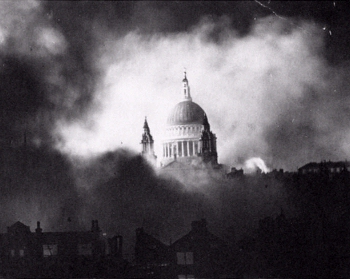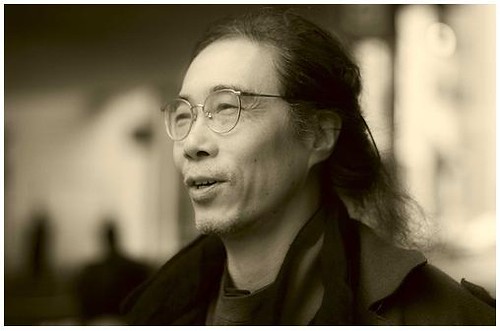
As to prepare the
Work Space series for
Other Possible Worlds in
NGBK, I had to update the info of the art spaces that I visited for the project 3 years ago and re-read the original text. The one provided by
Roger McDonald of
AIT also includes a written reply to my questions drafted for the
interview. It still reads well and I share it here.
What’s the name of your organization?Arts Initiative Tokyo or AIT for short.
Where, when and who founded it?Began MAD, our school in 2001. Became a registered non profit organization in 2002.
What’s the story behind this name?It says most succinctly what we do and what we aim to do – create initiatives related to art from Tokyo.
How many people were involved when it began and how many now? Who were/are they? Six people at the start. Three of us are full time. Four work in other positions and plug in when necessary.
How did it start? What was the social/cultural background then? Talking over beers in bars about what we thought Tokyo lacked/ needed/could do with improving. Many of us had spent time outside Japan studying. We had all returned to live and work. We began by spending about six months talking to various people, doing research and field work on what the Tokyo art situation was like – mapping it out to see what may be needed and how things could be different/ better.
Did the location of your first space matter? Did you ever move? Why/ why not?For the first 2 years we ‘squatted’ the library/ meeting room of Nanjo & Associates curatorial offices. We moved into our current premises in 2004. We have remained in the Daikanyama area of Tokyo because it is near Shibuya (a major train hub), has a certain village feel about it and seems attractive to the people who sign up for our courses.
What was the management model in the beginning? Any change in the structure of organization? Why/ why not? Are you steering it to an unprecedented model, or you do have some examples as reference?Director, two Deputy Directors. Practically speaking we each do multiple things. Each project may be led by one member with assistance from the others. Finances and general strategy is co-ordinated by the Director. Its rather shared and equal. Being small, we have tried to keep things compact, sustainable and tight.
What kind of activities did you do in early years and what’s the change and development? How do you see the relationship between your change and the development of local art scene?The first initiative was MAD, our school. It is independent of academic institutions and works more like evening classes. We offer Japan’s first curatorial studies courses, as well as courses on reading texts in English, contemporary art history and artists presentation skills – all aspects which art schools seem rather weak at. We began the artist in residence in 2003 because Tokyo lacked a proper residency – the city or state was not interested. Our efforts have hopefully encouraged others to follow suit, and now the City of Tokyo operates a residency. We continue to curate experimental exhibitions and events, and organize artists and curators talks. If someone interesting is passing through Tokyo we can organize something fast, without bureaucratic paper work. There is a large, eager constituency for contemporary art in Tokyo and beyond, which we try to tap into and expand. We are interested in creating discursive, layered spaces, rather than privilege exhibition or display.
How do you position your institution in relation with other establishments, organizations and artists in the hierarchy (if any) of the art world?We try to read and map the situation, to see what could be improved and maintain an independent attitude. Being an independent school offers a sense of difference to being a gallery or museum or art university. We seem to attract many people who want to learn more about art, but who are not students. Working people, house-wives, businessmen and students seem to be able to connect with what we offer and do – perhaps because we are not a ‘traditional’ framework like a commercial gallery or museum. This sense of broad appeal and molding a space wherein people can come together to think and discuss art and related issues at length is important to us.
What’s the focus of your programme? Do you specialize in certain area of art & artists? Are you also engaged in international/regional exchange? Could you elaborate your ideas on this issue?Our main initiative is running a school, and all this entails. We invite speakers from different fields to come and speak, we put together curriculums and try to create a comfortable space to discuss issues related to art, society, politics, religion. We do have a particular penchant for thinking about contemporary art as one activity within the wider social field, so we are interested in relations between what artists do and the various ways we can understand this. We try to maintain an international outlook – all our public mailings are bi-lingual and talks are consecutively translated. Many foreign curators and artists come to visit us. But this is time-consuming and often expensive. I notice that in recent years the subject of education or learning and contemporary art has received a fair bit of attention. I like to think that since 2001 we have tried to practice and initiate another way that an arts organization can operate. We are interested in nurturing audiences for contemporary art in Japan, and so are very open to offering courses which take an introductory or beginner’s level approach, right up to post-graduate level sessions on art theory or aesthetics. We are also interested in thinking how larger theoretical concerns such as ‘post-colonialism’ or ‘globalisation’ can be thought through in Japan – to connect them to local histories and issues rather than simply being exotic concepts which are expounded in big exhibitions in Europe. I suppose you can say that we are constantly involved in processes of translation and mis-understanding. It seems that this kind of experience is something that cannot be so easily generated in commercial galleries or even museum shows which tend to be about explicating clear narratives and understandings. I hope that what MAD enables is some space for dissonance and un-learning to occur – to be able to question what canons have passed down, to think imaginatively.
Where is your funding from? Is it related, or does it affect your programme? How do you see commercial sponsorship? How do you maintain your independence in programming?Amost all of our funding is self generated – we developed a business model from the beginning and this has continued. The school generates most of our annual income. The courses are fee paying and of different duration. The artist in residency generates income through management fees from various foreign arts partners, like IASPIS, FRAME and Asialink. Project funding is generated from individual grant applications to Japanese Foundations. In these cases, the content of projects may be broadly tuned into the particular directions of Foundations or Companies. But basically we are rather independent in terms of funding. We must generate our salaries, running costs, rent etc by ourselves.
Is there any legacy in your organization? We are in our eighth year. I hope that some legacy may begin to emerge after ten years or so.
What are the weak point and the strength of your organizations?Weaknesses – we tend to be rather ‘invisible’, because much of what we do involves discursive events rather than exhibitions. Strengths – Our ‘invisibility’ enables us to remain focused on issues and nurture longer durational projects or interests.
Has it ever have any crisis? How did it get over it?When visitors enter our space without taking their shoes off – we ask them politely to do so and all is well.
What’s your plan/idea/dream for the next five years (shorter or longer)?To develop new layers to what we have built up so far – to create a more complex and self generating situation which continues to build on what we have achieved. Small steps, to slowly generate new potentials – e.g. AIT book publications series, work with artists to realize limited editions, create a small exhibition area in our classroom space etc.










